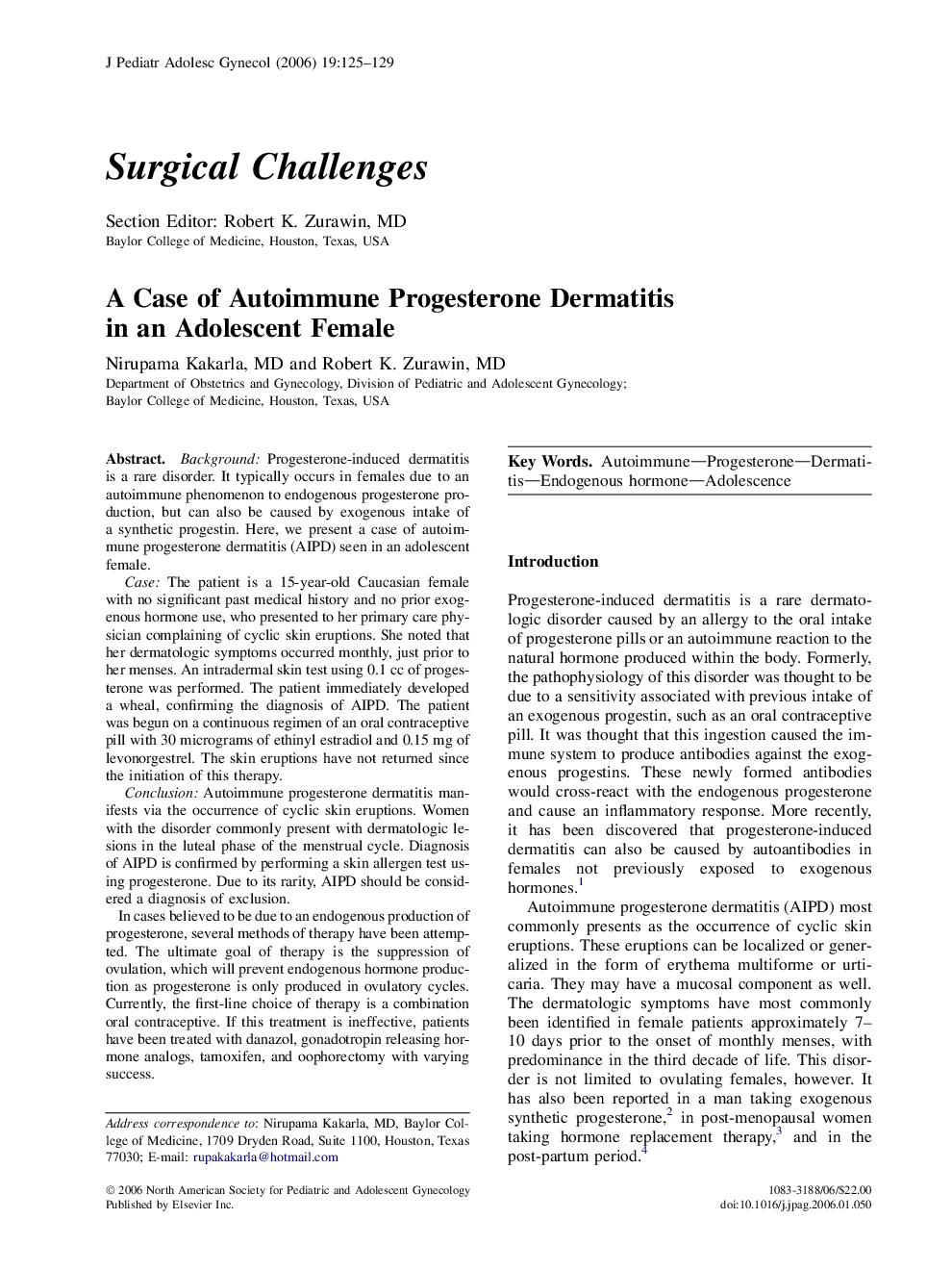| کد مقاله | کد نشریه | سال انتشار | مقاله انگلیسی | نسخه تمام متن |
|---|---|---|---|---|
| 3963551 | 1255725 | 2006 | 5 صفحه PDF | دانلود رایگان |

BackgroundProgesterone-induced dermatitis is a rare disorder. It typically occurs in females due to an autoimmune phenomenon to endogenous progesterone production, but can also be caused by exogenous intake of a synthetic progestin. Here, we present a case of autoimmune progesterone dermatitis (AIPD) seen in an adolescent female.CaseThe patient is a 15-year-old Caucasian female with no significant past medical history and no prior exogenous hormone use, who presented to her primary care physician complaining of cyclic skin eruptions. She noted that her dermatologic symptoms occurred monthly, just prior to her menses. An intradermal skin test using 0.1 cc of progesterone was performed. The patient immediately developed a wheal, confirming the diagnosis of AIPD. The patient was begun on a continuous regimen of an oral contraceptive pill with 30 micrograms of ethinyl estradiol and 0.15 mg of levonorgestrel. The skin eruptions have not returned since the initiation of this therapy.ConclusionAutoimmune progesterone dermatitis manifests via the occurrence of cyclic skin eruptions. Women with the disorder commonly present with dermatologic lesions in the luteal phase of the menstrual cycle. Diagnosis of AIPD is confirmed by performing a skin allergen test using progesterone. Due to its rarity, AIPD should be considered a diagnosis of exclusion.In cases believed to be due to an endogenous production of progesterone, several methods of therapy have been attempted. The ultimate goal of therapy is the suppression of ovulation, which will prevent endogenous hormone production as progesterone is only produced in ovulatory cycles. Currently, the first-line choice of therapy is a combination oral contraceptive. If this treatment is ineffective, patients have been treated with danazol, gonadotropin releasing hormone analogs, tamoxifen, and oophorectomy with varying success.
Journal: Journal of Pediatric and Adolescent Gynecology - Volume 19, Issue 2, April 2006, Pages 125–129